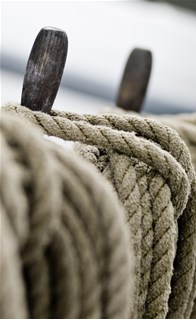|
By: Jeroen Berger, August 23, 2017 The Ballast Water Management Convention (BWM Convention) has met its ratification criteria and will enter into force on 8 September 2017, the International Maritime Organization (IMO) has confirmed. Finland has deposited its instrument of ratification to the IMO’s International Convention for the Control and Management of Ships’ Ballast Water and Sediments bringing the Convention into force officially.
The BWM convention stipulates that it will enter into force 12 months after ratification by a minimum of 30 States, representing 35% of world merchant shipping tonnage. Thanks to the accession of Finland the BWM Convention has met its ratification criteria.
About the BWM Convention
From 8 September 2017, ships of 400 GT or more must comply with the D1 standard. This regulation concerns ballast water exchange. However, the date on which existing ships must meet the D2 standard requirements have been postponed by two years. 8 September 2019 is the new date for these vessels that need to renew their International Oil Pollution Prevention (IOPP) certificate to comply with the D2 standard. This regulation covers specifies levels of viable organisms left in water after treatment.
In order to meet regulation D2, ballast water must be treated on board or must be delivered to the port. It is expected that many ship owners and shipping companies will choose to install a Ballast Water Treatment System (BWTS) from the moment they must comply with the D2 regulation. An IOPP certificate must be renewed every five years. This means that all existing ships must comply with the D2 standard between 8 September 2019 and 8 September 2024. Newbuilding vessels delivered after 8 September 2017 must comply directly with the D2 standard. Vessels below 400 GT must meet the D2 standard on 8 July 2024.
What is ballast water exactly and what are the consequences?
Although ballast water is taking care of stability and balance of the ship and is making sure that the ship propeller stays underwater, invasive aquatic species present a major threat to the marine ecosystems. The shipping sector has been identified as a major pathway for introducing species to new environments.
The impact from ballast water is not only noticeable on environmental and economic terms, in some cases the spread of some exotic species could have a negative effect on public health. For example, cholera was a water-borne disease that could survive in ballast seawater for long trans-oceanic voyages. Strains of this disease have been introduced to South America and the Gulf of Mexico due to ocean freight ballast.
Why an international convention for the control and management of ships’ ballast water and sediments?
The Ballast Water Management Convention (BWM Convention), adopted in 2004, aims to prevent the spread of harmful aquatic organisms from one region to another, by establishing standards and procedures for the management and control of ships' ballast water and sediments. The BWM Convention has been introduced to prevent, minimize and ultimately eliminate the transfer of harmful aquatic organisms and pathogens internationally.
Requirements for ballast water in the US
The United States (US) have their own requirements for ballast water. These regulations do not match with the IMO standards. The United States Coast Guard (USCG) have adopted their own regulations with respect to Ballast Water Management. For example, vessels sailing in U.S. waters will be required to adhere with United States Coast Guard (USCG) ballast water discharge standards.
More answers to questions about the BWM Convention
The Human Environment and Transport Inspectorate has collected relevant questions and answers regarding various subjects of the Ballast Water Management Convention (BWMC). This document was written in response to recurring questions raised by the stakeholders, mainly ship owners and classification societies.
Get in touch with us
Are you looking for a partner that can help you with finding, selecting, engineering and installing the right Ballast Water Treatment System for your type of vessel? Get in touch with us and we will be pleased to advice you.
| ||
| ||
|
Your information will be kept confidential. See our privacy policy for more information. |
Total overview Ballast Water Management Convention




